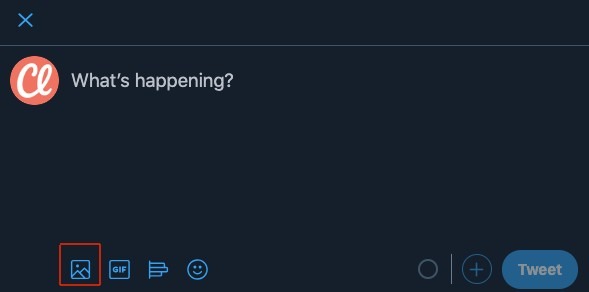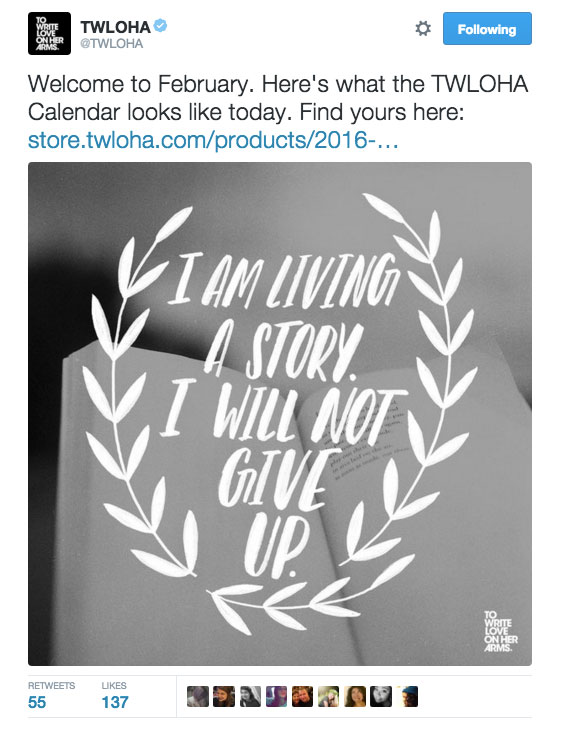25 Twitter Tips for the Modern Nonprofit

Are you marketing your nonprofit, mission, fundraising campaigns, and impact on Twitter? If not, it’s high time you got in on the massive opportunity it has to offer your organization. To help illustrate the point, let’s quickly explore a few stats about the platform.
- Twitter has 330 million monthly active users
- Around 134 million people sign in every day
- Roughly 500 million tweets get published every day, or 5,787 per second
- The average lifespan of a tweet is between 15 and 20 minutes
- People spend just over 3 minutes per browsing session
On one hand, we see that there’s absolutely a case to market to this massively engaged audience on Twitter. However, these stats also show us that there’s a tremendous amount of noise on the platform. So, the question becomes: how are you supposed to get noticed on Twitter?
We gathered 25 Twitter tips to help your nonprofit engage with your current followers, tap into new audiences, drive traffic to your site, and raise awareness for your work. From Twitter contests to analytics and insights, this list of Twitter tips is sure to reveal new ways you can leverage this robust channel. Let’s get started!
1. Promote Your Blog Content
Consistently producing high quality blog content could is a necessity if you want to fuel a content marketing engine. At the same time, it’s not enough to simply post the blog on your site and let it sit there. You have to actually promote it to the world.
Make sure you’re tweeting out your content on a regular basis. A good strategy is to tweet your content the same day it’s officially published on your site. In this way, you create a cadence that your audience comes to expect.
For example, they’ll come to your page every Wednesday morning at 10:30 a.m. to read the latest blog. If you’re ambitious, you could even commit to tweeting content every day of the week for your followers. Your promotion could look something like this:
We want to help #nonprofits tap into attitudes, behaviors, and motivators of donors. Crush your year-end giving campaign with these key insights we uncovered: https://t.co/2lEQZVBWuV pic.twitter.com/yGxcuq2DyS
— Classy (@classy) December 19, 2019
2. Post Other Articles
You don’t always have to post your own content to your Twitter page. Whenever you come across a blog that really resonates with your nonprofit, and it’s something you think your audience would also find interesting, tweet it.
This can help validate your organization and build trust among your followers since you’re now a source for relevant, timely, or newsworthy happenings. It’s also a great way for you to engage with other likeminded brands, nonprofits, or companies on Twitter and show your support.
Buffer, a social media scheduling platform, suggests formulas and ratios for how you can mix up your own content with other content. One of their popular ratios is the 5-3-2 model, which says that for every 10 posts that you distribute, 5 posts of content from others-3 pieces of content from you-2 personal status updates.
3. Tweet All Sorts of Updates
Twitter is the perfect place for a quick, press bulletin style “newsflash” tweet. From major company announcements to the small details of your 5k event, keep your audience in-the-know so they stay interested in your cause.
Even if you don’t have an earth-shattering update at the moment, get creative and find something to share with your audience. For example, you could re-tweet a post from a fellow nonprofit, or a breaking news article from your favorite source.
As you look for updates, don’t avoid something because it’s small. On Twitter, it’s often better to over-communicate because the sheer amount of tweets that get sent out every second (5,787) can easily drown your message out.
4. Try a Twitter Contest
Twitter contests are relatively simple to orchestrate. You select a prize you’d like to award a winner and then launch a giveaway, “most creative answer,” caption contest, photo contest, or “follow to win” to name a few. The contest can have whatever parameters you want to set, so don’t be afraid to get creative.
This is a great way to strengthen your rapport with current followers, but it also opens you up to engage with entirely new audiences. For example, you could raffle off tickets to your next event to users who follow your profile and retweet a certain post. You could also try to:
- Ask users for comments or suggestions on your next campaign topic or title
- Post a picture of branded swag and give it away to the top sharers
- Engage followers in a 140 character “caption this” photo contest
- Ask your audience to guess how much a certain campaign raised and give a prize to the closest guess
5. Mind Your Character Limit
There are a lot of ingredients that go into a successful Twitter post, like hashtags, mentions, and the actual body copy of the tweet. It used to be that you only had 140 characters, but it was recently doubled to 280.
Everything you include, even spaces and returns, will detract from that character count. So, make sure you’re precise with your wording and targeted in your tagging. If you can say something in five words as opposed to 15, do it. And don’t waste valuable space tagging a profile who isn’t relevant or adding extraneous hashtags.
6. Consider Segmented Twitter Channels
If you find your organization’s Twitter handle is being flooded with tweets unrelated to your posts, you may want to consider creating a secondary account. As your Twitter audience grows, you will likely see an increase in logistical inquiries. Redirect these requests to a “help handle” to create a streamlined process to answer questions, build trust, and encourage transparency.
This is a tactic used by many for-profit companies, like HubSpot. In fact, they’ve has segmented their accounts into multiple handles:
- Main HubSpot handle
- HubSpot Academy
- Support handle
- Product team handle
- Company culture handle
These handles don’t operate in a silo either, they all engage with each other. For example, when the HubSpot company culture handle, HubSpot Life, posts something, the main HubSpot handle will retweet it:
Here are the 8 buzzworthy benefits your employees want in 2020, courtesy of @jljenniferliu on @CNBC.@HubSpot Chief People Officer @katieburkie predicts an uptick in the need for more personalized #careerdevelopment paths: https://t.co/MmxwF6R3lZ
— HubSpot Life (@HubSpotLife) December 20, 2019
Once segmented, you might not have the same audience of followers on all your handles. It’s important to use each one to promote the other’s content in order to get it seen by everyone.
7. Use Twitter Polls
Twitter polls are an exciting way to engage your audience by asking a question and polling your followers for answers. You might ask for ideas on fundraising campaigns, get feedback from your last event, or even use the poll for some light-hearted non-business engagement. Here are a few examples:
Poll for #NGOTech19 – is your nonprofit getting a real return from organic Facebook, or only with Facebook Ads?
— DigitalCharityLab (@DigiCharityLab) September 26, 2019
POLL: How much money do you donate per year?
I’ve been learning more about the nonprofit space which has me curious about giving habits.
(results are anonymous)
— Kurt Varner (@kurtvarner) September 4, 2019
8. Mute Your Followers if You Want to De-Clutter Your Feed
Following your followers back is a tried-and-true method for keeping track of your supporter demographic and making them feel special, but this can also clutter your home newsfeed with a slew of random tweets. Twitter’s mute feature allows you to remove any follower’s tweets from appearing in your home feed without unfollowing or blocking their account. This enables you to streamline the content you want to see in your feed and still follow any supporter you want.
9. Use Images
It’s important you include images on your tweets where relevant. Polls and general posts to your audience likely don’t need a photo attached, but if you’re promoting blog posts or anything you want to drive clicks on it’s imperative.
In fact, tweets with images get more engagement than those without, and they’re 34% more likely to be re-tweeted. The best part is that it only takes three clicks to add a photo: just click the image button, upload your photo, and you’re set.

10. Show Yourself Off Visually With Branded Content
These days, people operate on a “pics or it didn’t happen” mindset, which means they want visual evidence for proof of any event. Publicizing your brand with photos and graphics can boost engagement on a tweet by up to 47%.
Plus, images evoke a strong visceral connection for viewers and capture attention in a way text alone cannot. Here are a few things to keep in mind:
- Add your logo to original work for copyright and branding purposes
- Always give photo credit to the source
- 1024 x 512 pixels are the optimal dimensions
- Uploading anywhere from one to four photos only takes up 24 characters total
In this example from To Write Love on Her Arms (TWLOHA), you’ll notice their logo in the lower right corner ensures they maintain ownership of this image.

11. Know What Performs
Simply put, different content performs better on different social media channels. For example, text-based content doesn’t shine on Instagram, but it flourishes on LinkedIn. When it comes to Twitter, users engage with statistics, lists, how-to posts, and quotes.
Tweets with numbers or statistics, such as campaign results or year-over-year growth, are both digestible and attention-grabbing. Posts introducing a list or a “how-to” received three times as many retweets than other text-based content in a study by social media maven and Crazy Egg founder, Neil Patel. This study also found that quotes outperformed questions by 847%.
12. Segment Followers Into Twitter Lists
Twitter lists help you categorize your followers into specific groups for your own organizational purposes. You can either build your own lists or subscribe to lists created by others.
When you open your list, you’ll see what appears to be the normal Twitter newsfeed. However, it will only be filled with content posted from the specific people on your list. You can create both public and private lists, but be aware that accounts receive a notification when you’ve added you add them to a public list, and public lists are accessible to any Twitter user.
13. Post Consistently
Missing even one day of posts and notifications in the Twitter world can mean losing out on thousands of potential impressions and clicks. Consistent posting gives your audience a sense they can depend on your engagement and a reason to frequently visit your page.
Camp Kesem, for example, encourages its nationwide chapters to post consistently with the hashtag #WhyIKesem to explain why all of their young volunteers dedicate their time and energy to the cause. Not only does this produce stellar user-generated content, it also ensures that Kesem has sustained engagement on Twitter.
Stronger together. 💚💙 #WhyIKesem #GreetingsFromCampKesem pic.twitter.com/dd0A6izQSS
— Kesem (@CampKesem) July 25, 2019
14. Consider Shortening Your Links
Links can be long, and Twitter character counts are short. And the longer your link is, the less space you’ll have to write compelling copy, add hashtags, and tag other users. Thankfully, services like Bit.ly exist to help truncate long, sometimes visually distracting, URLs.
Aside from saving character count, Bit.ly also has built-in tracking and analytics capabilities so you can monitor engagement on specific links. It also won’t strip other tracking parameters or source codes on a long link if you’ve already built them into your URL.
15. Make Use of Tools
Given the rapid speed at which Twitter moves, it can be overwhelming to match pace and constantly publish content, respond to inquiries, and engage with audiences. To that end, there are countless scheduling software options available, both free and paid, that can make your life easier.
Tools like Buffer, Hootsuite, and Later, to name a few, give you the option to pre-write copy, schedule posts for specific times, add hashtags, and tag profiles. In theory, you could plan out an entire year’s worth of Twitter content that would auto-publish, which could save countless hours of time.
16. Emoji Are Powerful
Today, there are over 3,000 emojis you can use in your messaging, from 😎 to 🏄 and almost everything in between. What’s more, 92% of the world’s population uses emoji in their digital communications.
When it comes to your tweets, emoji are a powerful tool, and not just because they only take up one character on your precious count. Instead, they’re able to convey a wide range of emotional sentiment in a colorful, yet practical, way that grabs someone’s attention.
17. Know Your Jargon and Twitter Etiquette
Twitter has an entire acronym language members are expected to know and use. These acronyms save characters and show who’s up-to-date with the latest Twitter slanguage. Remember these popular acronyms to save space:
- RT—Retweet: Use when you re-post someone’s exact tweet
- MT—Modified tweet: Use when you paraphrase a tweet written by someone else
- DM—Direct message: Use in reference to a direct, private message thread
- DYK—Did You Know: Use to start a tweet where you present a pointed fact
- ICYMI—In Case You Missed It: Use to start a tweet about something newsworthy or relevant
While it’s important to speak the lingo well, you should also be conscious of the proper etiquette surrounding your interactions in the Twitterverse. To be courteous and delight your following:
- Favorite all mentions of your handle
- Retweet compelling messages or influential followers that mention your handle
- Tag and give credit to sources for articles you post that are not your own
- Thank users when they begin following you (learn how do so automatically)
18. Tweet on the Weekends
Once the weekend rolls around, it’s easy to forget about your Twitter channel and unwind. However, Twitter engagement is roughly 17% higher for brands on the weekend. This is due mainly to the fact that most people are off work and can spend more time browsing.
This further underscores the value in getting a scheduling software so that you don’t have to continually write and publish content on the weekends. Instead, you can monitor your handle for activity, and browse for your own interests.
19. Reply When Someone Tweets You
When someone tags your handle and tweets at you, it’s easy to click the heart icon and call it day. However, that doesn’t provide the most engaging experience for you, the person tweeting you, or the rest of your audience. Sending a thoughtful reply can be an effective engagement primer, especially if this is a person who’s engaged with your posts before.
For example, if someone finds an interesting data point relevant to your cause and tags you, you can reply and start a conversation with them about this. As you two go back and forth, others might see the conversation and chime in with their thoughts as well. Your response invites others to share in the knowledge.
20. Use Twitter Ads
Depending on your marketing budget, you can pay for your tweets to be featured in more newsfeeds outside of only your followers. Currently Twitter offers three types of promoted content: Promoted Tweets, Promoted Accounts, and Promoted Trends.
Further, Twitter Analytics allows you to track your budget, amount of money spent, clicks, and other metrics to measure your return on investment for the ad. Promoted tweets increase the number of people who see your message, opening the door to more clicks, followers, and interactions that will grow your audience. Some even argue that the click through rate is higher than that of Facebook ads.
21. Search for Yourself
It’s not narcissistic, it’s smart. Unless a tweet contains your handle exactly as it appears, like @Classy, then you won’t get a notification. Search the name of your nonprofit without the @ symbol, your handle with a hashtag in front of it (i.e. #Classy), your website URL, or any unique hashtags you’ve crafted specifically for your nonprofit. Twitter allows you to save searches phrases that auto-populate in a drop down menu when you click the search bar; use this to keep track of any important conversations involving your organization.
22. Direct Message
Twitter’s direct message (DM) feature allows for private correspondence with anyone who follows you, which comes in handy when a conversation becomes too sensitive for the public eye or contains personal information. In these scenarios, be ready to politely ask the person to begin a direct message so you can personally resolve the issue away from the eyes of the rest of your followers.
Use your own discretion as to which conversations should be made private. Here are a few hypothetical situations in which you may want to employ the DM approach:
- Dissatisfied volunteers or donors tweet a bad review or angry message about your nonprofit
- A follower tweets that they wish to be given the personal email and phone number for one of your staff
- Key fundraisers or sponsors for your nonprofit ask how much your event or campaign raised, but you have not yet released the data to the public
Hashtags are an important ingredient for any successful Twitter post, but make sure you use them sparingly. Posts with one to two hashtags get 21% more engagement than those with three or more.
You should also research relevant and timely hashtags before you post. Think about what’s happening, like #GivingTuesday or specific cause awareness months, that you can leverage to get your posts in front of the right audience.
Finally, it’s a good idea to create a branded hashtag for your nonprofit, campaign, or event like we do with our annual Collaborative event. Whatever you use, remember to use it a lot: the more longevity a hashtag has beyond a single event or campaign, the better your engagement.
24. Twitter Analytics
Twitter Analytics offers a wealth of knowledge about your account activity on a monthly breakdown, like:
- Total tweets made
- Impressions
- Profile visits
- Mentions
- Followers
It also goes into a detailed analysis of the month to show you a snapshot of your growth for the month in the aforementioned areas as well as:
- What your top tweet was
- Who your top follower is
- The top mention
- Highest viewed media tweet
These metrics will guide your future strategy as they inform you what you should double down on, and what you should pivot away from. To access your analytics, simply find it in the left navigation menu and click in.
25. Get Your App On
Download both the Twitter mobile and computer desktop apps for the best Twitter experience. The phone app is great for on-the-go access when you’re out of the office and will keep you from going radio silent on the weekends. The desktop app keeps your Twitter feed open outside of your web browser, so it won’t ever get lost among the rest of your windows and tabs.
Twitter is extremely fast paced, but in many respects that’s what makes it so special. These 25 Twitter tips will help keep you on top of the action as you engage with followers, promote your nonprofit effectively, and reach new audiences.
If you’re looking for more Twitter tips, or tips for other social media platforms, make sure to download our guide to social media below. Additionally, you can use the Classy for Facebook integration to extend your nonprofit’s reach and empower supporters to raise more money.
Free Download: Classy + Facebook—A Guide to Boosting Fundraiser Retention
Last, make sure to follow Classy on Twitter, we’d love to connect!
*Editor’s Note: This post was initially published in 2016 and has since been updated with new information.

The BIG Guide to Social Media for Nonprofits



